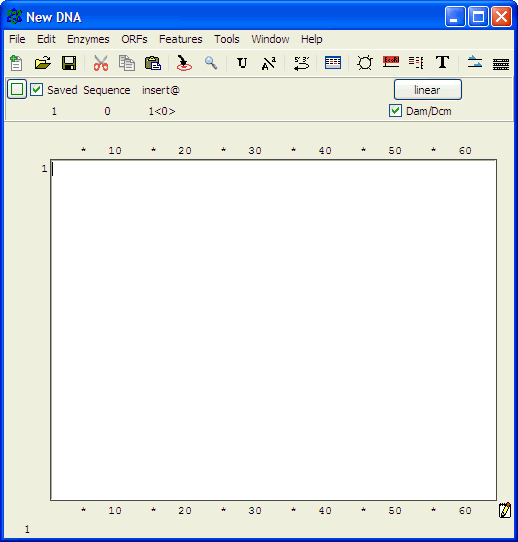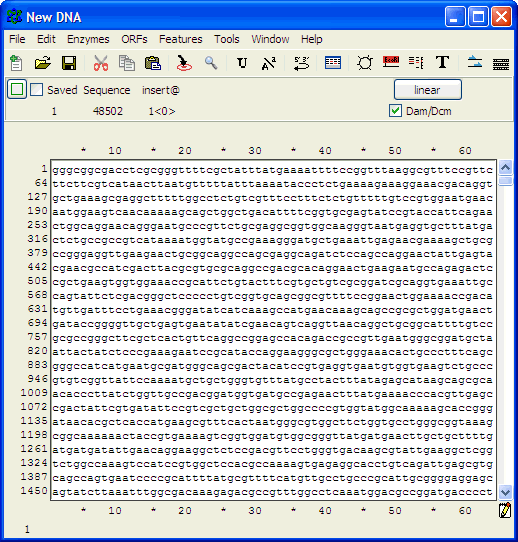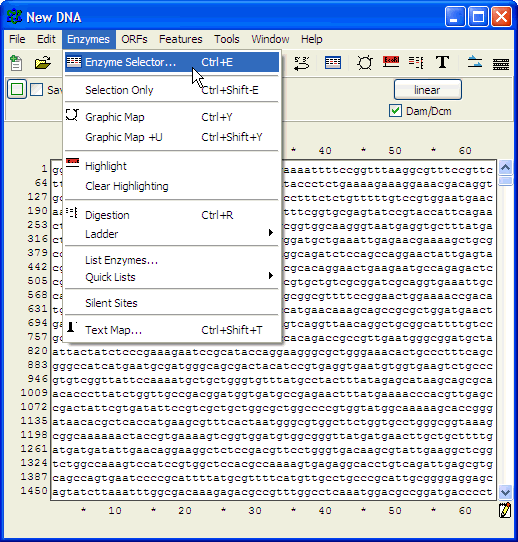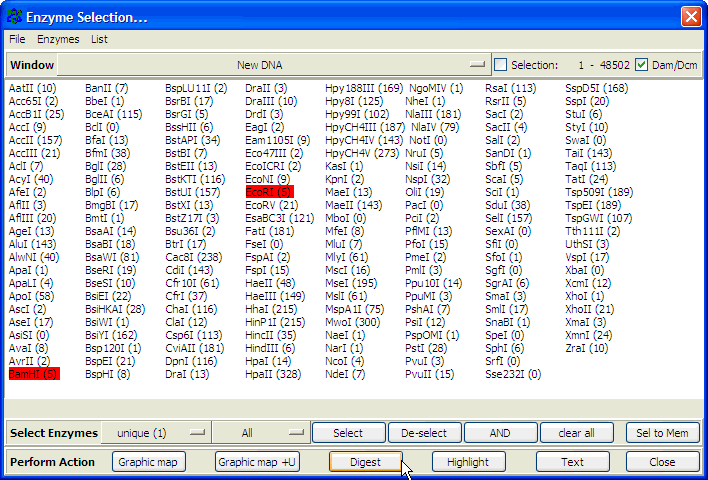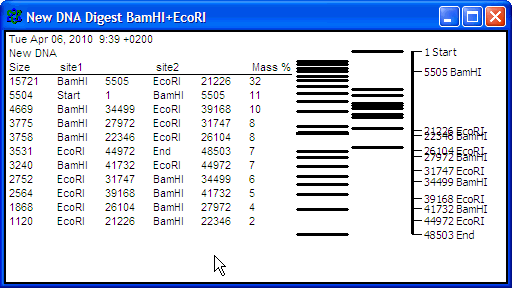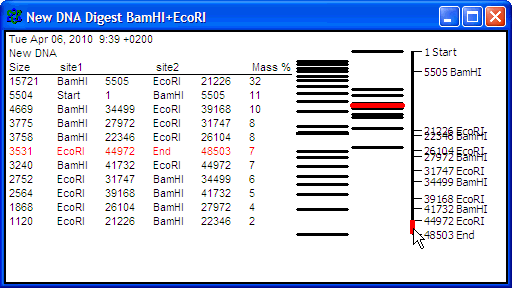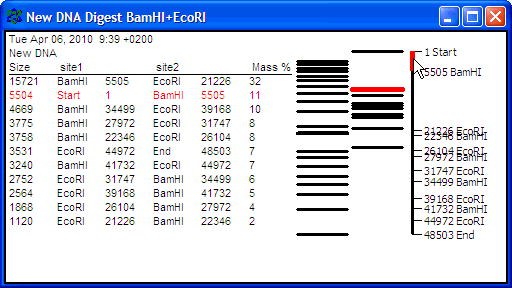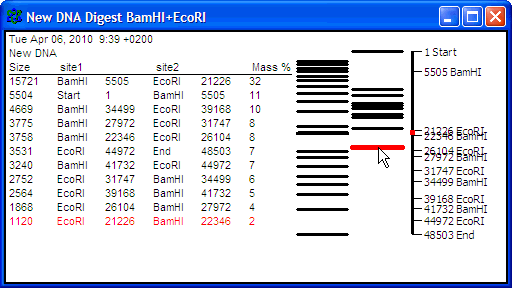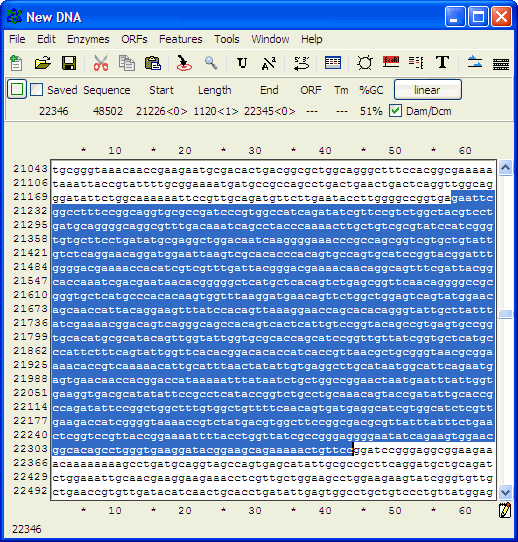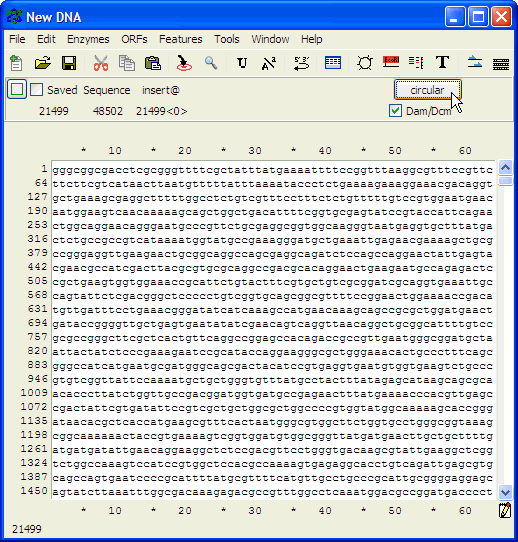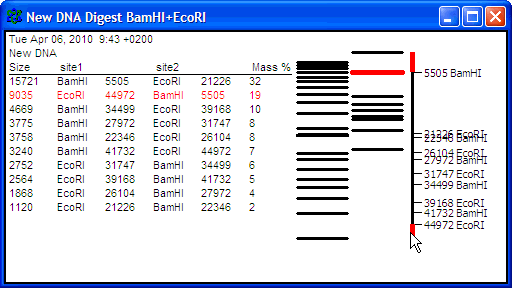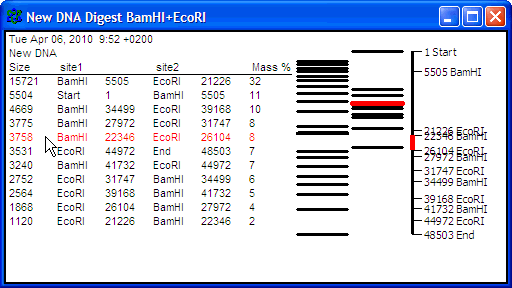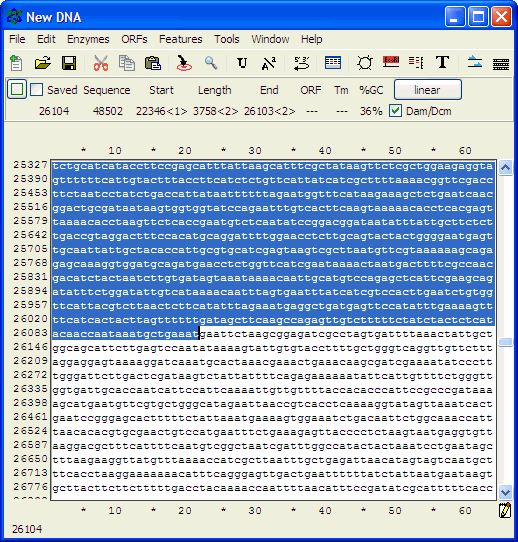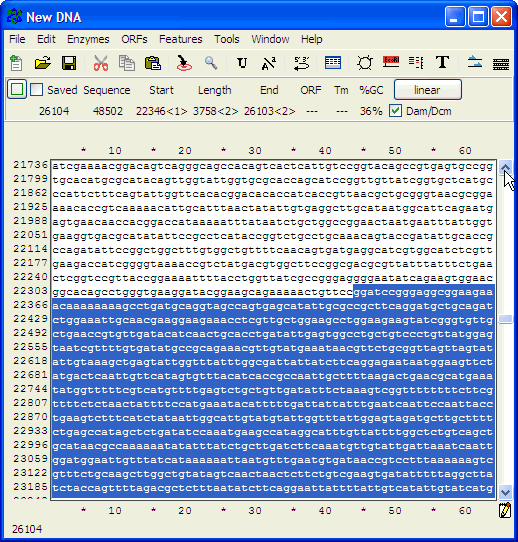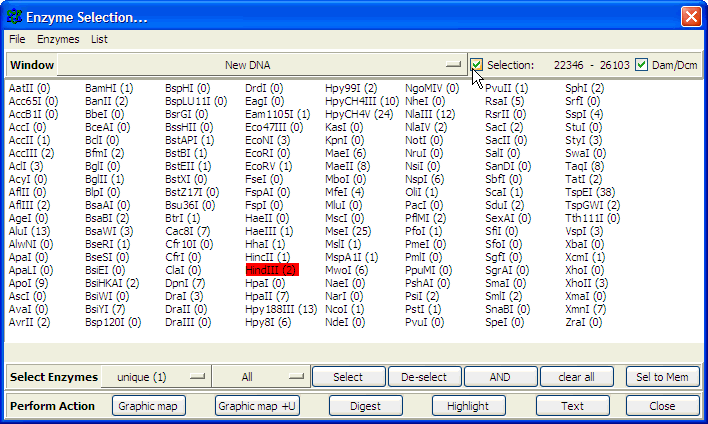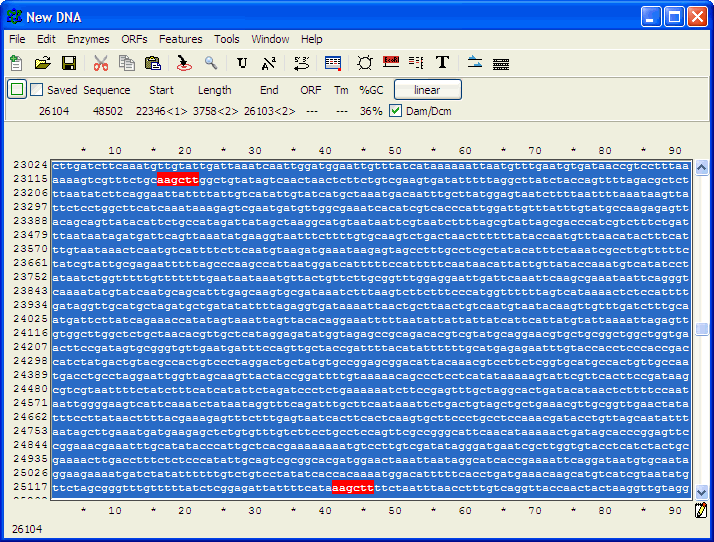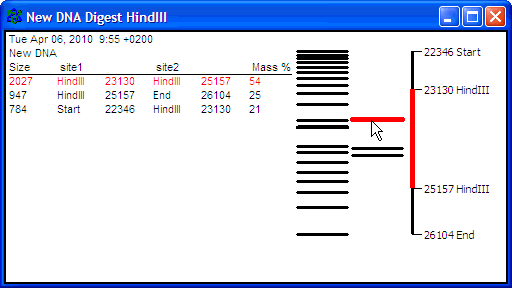Examples of how to use ApE:
Paste the sequence of Lambda DNA
(from SCLResources>sequences)
note:
Go to the Enzyme Selector:
and click on BamHI and EcoRI; both enzymes show to have (5) recognition sites in Lambda DNA.
Click the Digest button to get the digestion result
Hover the mouse arrow over the bands, map or text, to get
additional info:
and the other end fragment is 5504 bp long and runs from the start (cos-end) to the BamH I site at position 5505.
When you click on a band (or
fragment) in the digest window, the corresponding part of the
sequence in the main ApE window is highlighted!
the sequence of this fragment is highlighted, with the EcoR I (gaattc) site at one end (position 21226) and the BamH I site (ggatcc) at the other end (position 22346)
In solution, some of the lambda
DNA molecules are joined at their cos-ends, to form the cos-site.
Those circular (or multimeric) Lambda DNA molecules do not give the
end fragments of 5504 and 3531 basepairs, but a combination of those
two fragments, giving one big fragment of 9035 basepairs.
and digest again using BamH I and
EcoR I.
To show the two Hind III sites in
the insert of pGTl3758,
highlight the 3758 fragment in the digest window.
Clicking on the 3758 fragment highlights it's sequence in the main window, with EcoR I (gaattc) at one end
and BamH I (ggatcc) at the other end.
To find the two Hind III sites, used in the pGTl3758DH construction, select HindIII (de-select any other enzyme..) in the enzyme list, with Selection checked (see mouse arrow in the picture below)
and click the Highlight button. The two Hind III sites within the are shown in red.
Clicking the Digest button in the Enzyme Selection window shows the positions of the Hind III sites (23130 and 25157) and the length of the Hind III fragment (i.e. the deletion in pGTl3758DH !)
|
